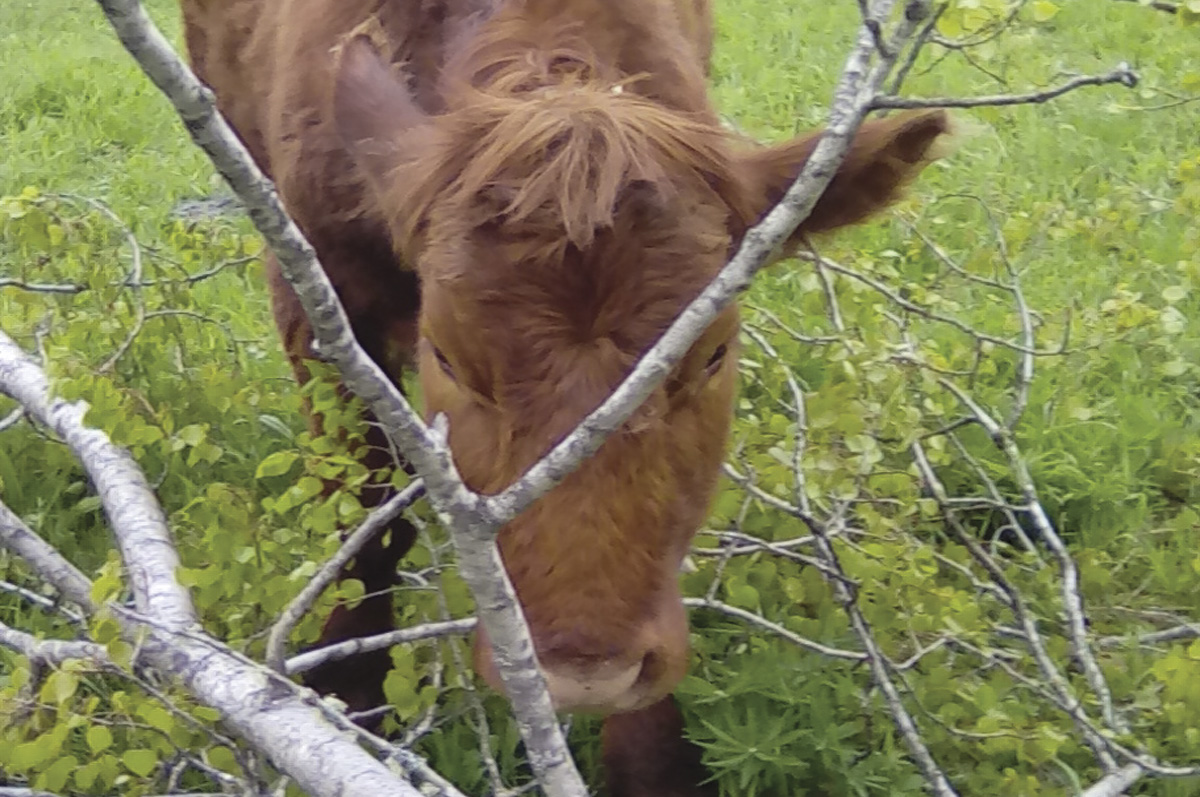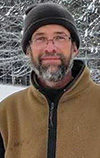With drought conditions common in many parts of the country in recent years, cattle producers often find themselves scrambling for forage. One underutilized forage, tree hay, is gaining traction as an emergency feed for ranchers trying to feed cattle economically.
People have been feeding trees to cattle for hundreds, if not thousands, of years. Although cattle often don’t browse trees as readily as sheep and goats do, they quickly learn to take advantage of the leaves, twigs and bark of certain species. Caution is in order when feeding trees to cattle. Some species – notably ponderosa pine – can cause abortions in bred cows. Other species, such as maple, can be toxic to cattle. Poplar is well known as a nutritious feed without toxicity dangers.
Phillip Lancaster, a beef cattle nutritionist at Kansas State University, emphasizes that nutritional information on different species of trees may be difficult to find. He says the leaves may have adequate nutrition, but you need to be “careful about what trees you use.”
In a fact sheet from the New Zealand Poplar and Willow Research Trust, the authors state that poplar and willow leaves contain enough protein and other nutrients to be an adequate maintenance feed for cattle. Frank Morrison’s Feed and Feeding briefly mentions using tree hay as feed, stating, “Leaves of the ash, birch, linden and elder are valued in the order given.”

The inner workings of Shana Hanson’s experimental machine – with flail rotors in front of exit tire rollers and a wavy gathering belt above – could help cattle feeders collaborate with tree care professionals to access overlooked sources of feed. Photo by Seamos Blake.
Another potential problem is the destruction of young trees. Cattle left to browse indefinitely in a wooded or partially wooded lot will destroy all young saplings of desirable species, devaluing wooded land.
Shana Hanson of coastal Maine has done on-farm research on using trees as livestock feed. Over the years, some of her projects have been funded by the USDA’s Sustainable Agriculture Research and Education. Hanson sees great opportunity for the production of fodder in woodlots, calling the canopy of trees an “air meadow.” Hanson emphasizes that when practicing pollarding, a practice of cutting branches from trees rather than cutting down the whole tree, care must be taken not to harvest too much from tree species that struggle to recover from it.
“You have to leave at least a third of the greenery on birches, poplars and conifers,” she says. “It's also important not to 'cut too hard.' Make sure to leave sufficient years of rest between harvests [for tree hay] – typically three to eight years, depending on tree health and vigor.”
In centuries past, pollarding was the way small farmers and homesteaders harvested trees for livestock feed. In contrast, trees have been used in Russia for decades on a much larger scale. In Russia, black spruce needles, along with twigs and bark, are routinely fed to cattle. There, it’s called “muka,” the Russian word for “meal.” Several sources state that hundreds of thousands of tons of muka have been produced annually in Russia in the past.

Cattle graze poplar leaves on a farm in northern Maine. Photo by John O’Meara.
One of the projects Hanson conducted in Maine entailed testing nine species of tree leaves at Dairy One. The test was the “ration balancer” wet chemistry test, which is often used to determine the nutritional content of cattle forage. The species were beech, white birch, yellow birch, quaking aspen, bigtooth aspen, red maple, red oak, white ash and willow. The crude protein for the fodder ranged from 8.9% to the high teens, depending on the method of preservation. Crude protein was lower in samples that included chipped branches or wood.
Currently, Hanson is working on a project to develop a machine that would separate leaves from wood. This machine could be used in places where companies trim and chip branches near power lines. The machine would be applied to the product produced by a tree trimming company, creating a nutritious leaf feed while leaving the wood chips for another purpose. Tree trimming companies commonly give away the chipped branches and leaves they produce.
Wood is one of the problems with tree hay. Many experts agree that the leaves and needles of several species of trees can be nutritious for cattle. Wood, however, has far too much lignin to be usefully digested by cattle. Hanson’s leaf separator may be a solution to that problem.
The most recent large-scale university study on tree hay (in this case, black spruce needles, or BSN) was conducted at the University of Guelph in 2020. In that study, lead author Cathy Lafreniere ultimately does not recommend feeding tree hay to beef cattle, mostly because the high levels of lignin in the feed resulted in poor body condition.

Researcher Shana Hanson, right, separates leaves from wood chips to use as cattle feed. Photo by Seamos Blake.
In this study, the cattle were fed varying amounts of BSN as their feed – from 0% of the ration up to 37%. The negative effects of the high-lignin diet were experienced in the test groups being fed more than 15% BSN as their diet. There was no negative effect on the birthweight of the calves born after the study was concluded.
Anecdotally, Norway spruce is often grazed by cattle in Europe in winter, but there have been few or no studies on the effect this incidental feed has on the cattle. Some experts surmise that the cattle in this situation choose to eat young spruce; younger trees would have a lower lignin content and would not tend to have a negative effect on body condition.
Black spruce is an attractive species to use because it is readily available and does not have the harmful compounds found in some pinus species (such as Ponderosa pine) common to western North America. With drought conditions likely to continue in the short term in many parts of the country, feeding trees to cattle may become a more common feeding option.








